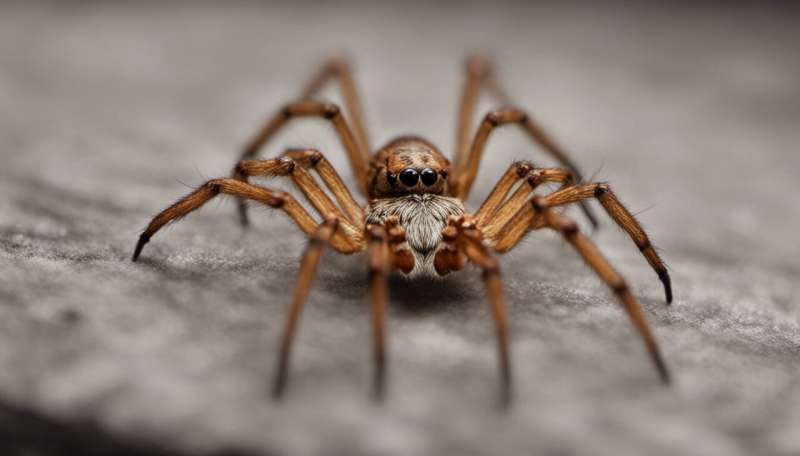Credit: AI-generated image (disclaimer)
Hypodermic needles, houseflies: both potentially threatening or repulsive but neither elicit the same response in the subjects of a recent experiment. The gut reaction of the many who experience arachnophobia, and 4 % of the UK population say they do, is not learned but seems to be innate.
Common or garden house spiders pose no threat to us, but the sight of a scurrying bundle of legs in the corner of a room is enough to make many feel either fear or disgust. While of no danger to us now, the theory is that some dangerous species may have been common during our evolutionary history. A number of species with potent venoms populated Africa before hominoids and have co-existed there for tens of millions of years.
Joshua New, Department of Psychology, Barnard College, New York City, and colleague Tamsin German, published their findings in the paper "Spiders at the cocktail party: an ancestral threat that surmounts inattentional blindness' in the journal Evolution and Human Behavior. They write, "The human visual system may retain ancestral mechanisms uniquely dedicated to the rapid detection of immediate and specific threats (e.g. spiders and snakes) that persistently recurred throughout evolutionary time."
Spotting the arachnophobe
Subjects were shown abstract images including other fear and repulsion triggers such as needles and flies: of the 252 people reviewed in the study, most recognised the spiders much more quickly than other images known to induce fear. Spider images got more attention; the viewers spotted them and knew what they were. The authors reported that, "Despite their highly marginalised presentation, iconic spiders were nonetheless detected, localised, and identified by a very large proportion of observers.
Their test, said the authors, made use of the 'inattentional blindness paradigm' in which an unexpected, peripheral stimulus is presented coincidentally with a central task-relevant display. "Spiders," say the authors, 'may be one of a very few evolutionarily-persistent threats that are inherently specified for visual detection and uniquely 'prepared' to capture attention and awareness irrespective of any foreknowledge, personal importance, or task-relevance."
The results, they said, supported the hypothesis that humans 'may possess a cognitive mechanism for detecting specific animals that were potentially harmful throughout evolutionary history."
This is not the first time the phenomenon has come under examination. In 2008, the study "Do infants possess an evolved spider-detection mechanism?" appeared in the journal Cognition. The research revealed that babies looked at spiders longer than they looked at other images. Authors David Rakison and Jaime Derringer talked about, "an evolved predator recognition mechanism that specifies the appearance of recurring threats."
Rakison told Inside Science that, "At least with children, there's very little conflicting evidence that spiders and snakes have some kind of privileged nature in human visual processing."
Journal information: Evolution and Human Behavior , Cognition
Provided by CORDIS























